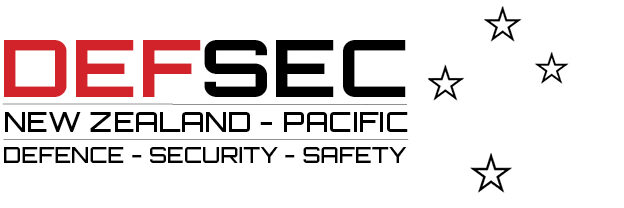
Committing $12 billion over the next four years with $9 billion in new spending, the Government seems intent on ensuring the development of significant capabilities for the New Zealand Defence Force, writes Editor-at-large Dr Peter Greener.
On 7 April 2025, quietly, and at a Post-Cabinet Press Conference, Prime Minister Christopher Luxon introduced the long-awaited 2025 Defence Capability Plan.
For those of us who follow Defence Capability development, any new DCP is a significant event. The 2025 Defence Capability Plan is more significant than most. This article will explore why this is the case, examining a range of capabilities that the Plan has within its sights.
The context
“New Zealand is facing a more challenging strategic environment than we have for decades, with increasing threats to our security,” so said Defence Policy and Strategy Statement 2023 produced under the previous Labour government.
The 2025 Defence Capability Plan echoes such sentiments, but strengthens the language somewhat. It notes that New Zealand is facing “its most challenging and dangerous strategic environment for decades,” and goes on to emphasise the challenges facing the international rules-based order.
It notes that as strategic competition rises globally and regionally, so does the potential for armed conflict. The rise of China in the Indo-Pacific, its attempts to broaden its spheres of influence, and the development of its military capability, all heighten concerns about China’s future intentions. Recent developments in the South Pacific and strategic interest in the Southern Ocean and Antarctica all highlight that “New Zealand’s geographic isolation no longer shelters us from threats to the extent that it once did.”
“Due to the deteriorating security environment, and the increased threat to New Zealand’s defence interests, the level of strike capability will be increased through the procurement of new missile systems.”
Perhaps most tellingly, in her Foreword to the document, Defence Minister Judith Collins highlights that we “should never rule out that we may need to defend ourselves.”
Particular emphasis is given to the New Zealand Defence Force (NZDF) being tasked with deterring potential threats, and in order to do so it is acknowledged that the NZDF needs to be combat capable with enhanced strike capability and enhanced lethality. No previous recent defence capability plan has spelt out the need for such a robust response to the global geostrategic situation.
Significant recognition is given to New Zealand’s alliance relationship with Australia, with an imperative of New Zealand being a force multiplier. The importance of enhanced interoperability and integration of forces is specifically recognised, with the future “development of a more greatly integrated ‘Anzac’ force.”
What capability will New Zealand ultimately be able to contribute to such a force?

Detail of an image featured in the 2025 Defence Capability Plan. Image: NZDF.
Enhanced strike and lethality
Of particular note is that enhanced strike is the first capability element to be listed in the new DCP, and new missiles are to be bought in the near term.
“Due to the deteriorating security environment, and the increased threat to New Zealand’s defence interests, the level of strike capability will be increased through the procurement of new missile systems,” states the DCP. “This will provide a deterrent effect to adversaries and an ability to respond to hostile vessels at a greater range.”
Under consideration for enhanced weapons will be the P-8A surveillance aircraft and the Anzac frigates, or the possibility of land-based strike. Enhanced interoperability will be important here, and “Defence will explore acquiring the same capabilities as Australia or partners”.
Future indicative investments suggest the possibility of delivering long range strike from a range of platforms, land-based, sea, or air.
Traditional core capability replacements or enhancements
Of concern for some time has been the reduced operational availability of the SH-2G(I) Super Seasprite helicopters and the need for their replacement.
DCP25 recognises that maritime helicopters are a core component of a frigate’s capability, extending both the ship’s offensive and defensive capabilities. It is also noted though that they have utility for other ships of the fleet, with a capacity for surveillance, ship-to-shore transport and combat capabilities.
The Plan indicates that they will be replaced by 2028, with an indicative cost of approximately $2 billion dollars.
Similarly there have been concerns about the replacement of the frigates. However a commitment is made to maintaining a naval combat capability, with the two current frigates, Te Kaha and Te Mana receiving ongoing upgrades “to extend the life of the Anzac frigates…into the early 2030s.”
A commitment is then made that the frigates will subsequently be replaced with contemporary frigates. Of particular note here is that the Offshore Patrol Vessels Otago and Wellington will also need to be replaced and consideration is to be given to “whether commonality of design or systems with the frigates may be possible.” This is another commitment that many have been advocating for some time.
Given the significant value of work that New Zealand companies secured during the building of the two Anzac frigates, where these ships might be built, and what opportunities there might be for New Zealand input, are important matters for consideration.
Also of concern has been the variable performance in recent times of the Air Force’s Boeing 757s. On 19 December 2024 a Request for Tender was issued ahead of the DCP, citing maintenance costs and a lack of reliability, coupled with a competitive marketplace as a reason for fast-tracking. Interestingly two contenders were named, with the Boeing 737 Max 8 or Airbus A321 to replace the 757s by 2027.
Questions about the future of New Zealand’s artillery have been raised over time, but with the new focus on enhanced long range strike capability there is to be a renewed focus on land-based strike.
Whilst New Zealand troops have been using the 105mm Light Gun for training Ukrainian soldiers in the United Kingdom, a number of options for the gun’s replacement are to be considered. These include towed or self-propelled artillery, or rocket-based systems.
Australia has just last month received the first two (of 42) High Mobility Artillery Rocket Systems (HIMARS). With an imperative to have systems in common with Australia it will be interesting to see what replacements will be under consideration.
Army will also have significant investment in the Network Enabled Army programme, with up to $600 million to be spent in the near term, with more beyond.
Innovative solutions
DCP25 highlights that, relative to previous DCPs, it ‘includes further investments in lethality, uncrewed systems, and digital systems.”
Whilst a Southern Ocean Patrol Vessel was foreshadowed in DCP19, the new Plan sees a Southern Ocean patrol capability. With concerns about growing strategic interest in both the Southern Ocean and Antarctica, a multi-faceted response is considered, using uncrewed systems, boarding teams, and platforms.
Persistent surface surveillance (uncrewed autonomous vessels) to help maintain awareness of New Zealand’s vast areas of responsibility is envisaged in the near term, to be followed by sub-surface surveillance. Long-range, uncrewed, remotely piloted aircraft will complement surface and sub-surface assets. Uncrewed maritime helicopters will also be considered, together expanding significantly the range of uncrewed assets for the NZDF.
Defence Estate and People
Camps, bases and service housing all get individual scrutiny and commitments in DCP25. Despite former defence minister Ron Mark making a commitment in 2019 to defence estate regeneration, the programme has been marked by insufficient funding. Among other initiatives, DCP25 sees a Defence Housing Programme being established to support “operational effectiveness (and) mitigate attrition of key personnel.”
Until recently, high attrition rates have hollowed out many key areas of the Defence Force. Whilst recruitment is now strong there remains a lack of experienced personnel across all three services.
One of the most significant expectations in the Plan is that “the NZDF should be able to sustain land combat operations for at least 24 months.” In order to achieve this Army must grow.
DCP 19 indicated that the Defence Force would grow by 1,500 by 2035, with an increase in the size of Army to 6,000. DCP25 predicts that “to support the delivery of this plan, by 2040 NZDF will have grown by around 2,500 people.” As I commented following the release of the DCP 2025, “A platform isn’t a capability until you’ve got the people to drive it, fly it or sail it.”
This plan commits $12 billion of spending over the next four years with $9 billion in new spending and, in looking at the money that will be spent over the next 15 years, it does seem as though the Government is intent on both addressing the people issue and ensuring the development of significant capabilities for the New Zealand Defence Force.









